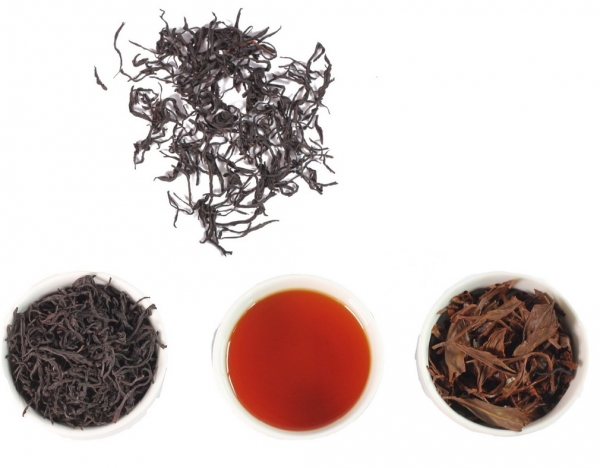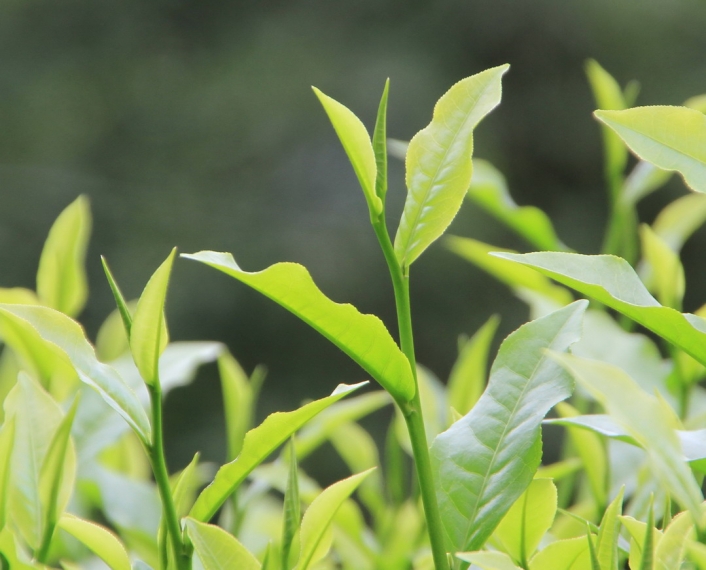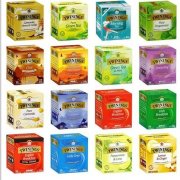What are the top ten famous teas in Taiwan? what are the best brands and types of tea in Taiwan?
Variety classification
Varieties are classified according to different characteristics, so that growers can apply the characteristics of varieties more effectively to improve production efficiency. The main classification methods related to cultivation include:
(1) by blood:
It can be divided into two categories: large-leaf species and small-leaf species, of which most of them are only suitable for making black tea or medium-and lower-grade green tea, while small-leaf species have a variety of varieties suitable for making all kinds of tea.
(2) according to the appropriateness:
It can be divided into five categories: suitable green tea, seed tea, oolong, black tea and wide adaptability. The main varieties include:
1. Green tea varieties: Qingxin Dawei, Qingxin citrus, Taiwan tea No. 5, No. 6, Taiwan tea No. 10, 11, 16.
two。 Packaged tea varieties: Qingxin Oolong, Qingxin Dawei, Daye Oolong, hard Branch Hongxin, four Seasons, Wuyi, Taiwan Tea No. 5, 12, 13, 14.
3. Tieguanyin tea varieties: Tieguanyin, hard branch red heart, four Seasons Spring.
4. Varieties of oolong tea: Qingxin Dawei, Taiwan tea No. 15 and 17.
5. Black tea varieties: Assam, Taiwan tea No. 1-4, Taiwan tea No. 7-11, yellow mandarin.
6. Wide range of varieties: Qingxin Dawei.

(3) classified according to tree type:
Can be divided into shrub and tree varieties, most of the varieties used in this province are shrub varieties, only Asam species, big leaf oolong, hard branch red heart and so on, belong to tree varieties. In cultivation, the picking surface of shrub varieties is shallow arc-shaped by arc pruning, while that of tree varieties is horizontal pruning.
(4) according to the production period of spring tea:
It can be divided into three categories: early, middle and late. The early species are Sijichun, Hardwood Hongxin and Taicha 17; the middle species are Qingxin Dawei, Taicha 14, Taicha 12 and Taicha 13; and the late species are Qingxin Oolong. The harvest time of the three varieties is about one week apart. At present, due to the serious shortage of labor in the tea area, if only a single variety is planted in the same tea garden, the labor demand for spring tea will be too concentrated, which will easily lead to delays in production or high wages, which will greatly increase the cost; therefore, if we can appropriately select varieties with different spring tea production periods in the tea garden, the spring tea production period can be staggered for as long as a month, which can effectively relieve the labor demand for spring tea.
Breeding of varieties
Tea tree is a kind of outcrossing plant. The seedlings obtained by sowing seeds are different from their parents in terms of growth habits, yield and tea quality. Therefore, at present, the province uses branches and stems to retain the good characters of the mother tree, and to make the growth status of the whole garden consistent, in order to facilitate management and production. Because the branches and stems can be used for propagation, so in the breeding method of varieties, as long as the excellent tea trees can be obtained from the seedlings after sowing, and then the stem insertion method can be used to propagate the tea seedlings for production, so the breeding method is much simpler than other crops, but the initial growth and yield of tea trees and the quality of tea production are greatly affected by the environment, so the breeding period is very long. In addition to being obtained from seeds, tea trees often have mutations, and many mutated branches can also be used to obtain new tea individuals.
In theory, any tea tree that is different from other varieties in appearance and growth characteristics can become a variety, but in order to become a good variety, it needs to be tested with various regions for a long time. It is proved that its yield and quality are worthy of economic production before it can become an excellent popularized variety. Therefore, all tea garden growers can obtain new individuals different from the existing varieties from the special branches of the tea trees sown with seeds or pay attention to the tea trees. After breeding, cultivation and investigation, if the appearance can be distinguished from the existing varieties, and the quality and yield are good, they can be called a variety, and these varieties are often called local varieties. These varieties still need to be planted in various regions to test their ability to regulate the environment, yield and quality before they can be popularized in large quantities.

The most systematic and scientific breeding method is to select excellent tea varieties as male and female parents, and then sow hybrid seeds after artificial hybridization, so as to improve the probability of good ontogeny. After sowing, the seedlings must go through four stages of selection and elimination before naming them.
The names and key selection points of these four stages are as follows:
(1) selection of nursery:
One year after sowing, some seedlings with poor shape and quality were eliminated in the nursery according to bud color, cashmere invasion and density, leaf thickness, leaf shape and growth potential.
(2) individual selection:
It will take six years. After selection in the nursery, the selected seedlings are called excellent individuals. One plant of each species was planted in the field with a row spacing of 1.8 meters and a plant spacing of 1 meter. After the fourth year, various growth characteristics were investigated, and the yield and quality of tea production were conducted in a batch of 300 to 500 excellent individuals each time. After planting for six years, they had high quality, yield and growth potential, and compared with their parents or control varieties, the better 5% to 10% of them were selected as fine strains and went on to the next stage of selection.
(3) strain comparison test:
It takes a total of six years. Each year, 10 strains are planted with a spacing of 45 cm in a row, with a row spacing of 1.8 meters. After six years of investigation, several to more than ten excellent strains with better quality, yield and adaptability are selected to enter the next stage of selection.

(4) Regional trials:
It takes a total of six years to select three to five tea areas in the province with row spacing of 1.8 meters and plant spacing of 45 centimeters. A total of 30 strains are planted in three rows and 10 plants per row in a total of six years. After six years of comparison, the strains with excellent performance are selected to apply for naming.
Tea breeding procedure in Tea Industry improvement Farm of Taiwan Province
In order to make the tea breeding work sustainable and standardized, the tea industry improvement farm has the following tea breeding procedures: the number of years required
Preliminary selection of tea seedlings (one year)
Strain comparison Test (Intermediate and Advanced Test by phone)
Regional examination (six years)
Review order
Important Notice :
前街咖啡 FrontStreet Coffee has moved to new addredd:
FrontStreet Coffee Address: 315,Donghua East Road,GuangZhou
Tel:020 38364473
- Prev

Guochao design retro elements play old brand soda packaging Huayang soda how is sand show?
It's the sound of soda! It's the sound of summer! In the summer when I was a child, the refrigerator was full of watermelons and chilled sodas. After growing up, there are more fashionable new products next to some familiar products, and many local old beverage brands have made a comeback in the market environment of the national trend. Why did this happen? Codeword worker 6 summed up 4 for you here.
- Next

What are the world-famous high-end black tea brands? What grade of Chuanning black tea is better to drink?
For more than 300 years, Twinings has been leading the way in black tea. When it comes to TWININGS, it is impossible not to mention the birth of Earl Grey tea. Although there are many accounts of the origin of the brand, it is generally believed that it originated from Earl Grey, who was Prime Minister of Britain in the 19th century. Twining at that time would be based on customers
Related
- Beginners will see the "Coffee pull flower" guide!
- What is the difference between ice blog purified milk and ordinary milk coffee?
- Why is the Philippines the largest producer of crops in Liberia?
- For coffee extraction, should the fine powder be retained?
- How does extracted espresso fill pressed powder? How much strength does it take to press the powder?
- How to make jasmine cold extract coffee? Is the jasmine + latte good?
- Will this little toy really make the coffee taste better? How does Lily Drip affect coffee extraction?
- Will the action of slapping the filter cup also affect coffee extraction?
- What's the difference between powder-to-water ratio and powder-to-liquid ratio?
- What is the Ethiopian local species? What does it have to do with Heirloom native species?

